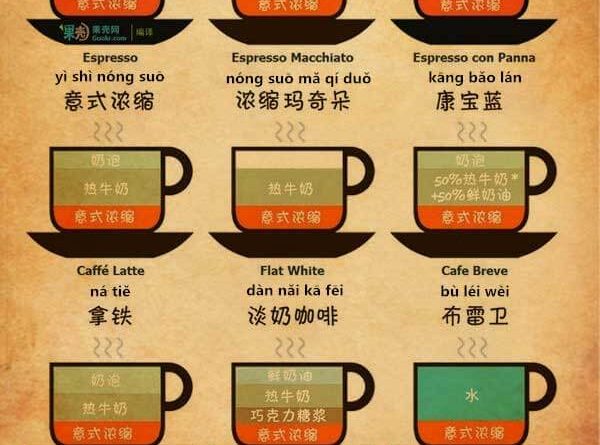Chinese Coffee Vocabulary
In addition to having one of the strongest tea cultures in the world, coffee culture is also exploding in China. As of July 2015, Coffee Consumption is in a growth cycle of 7x the global average, about 25% to 30% year on year.① With Coffee Cafe’s popping up everywhere, themes and gimmicks to set them apart from the rest are popping up too! You can hang out with docile, pettable cats in a cat cafe while drinking coffee, or you can drink coffee made from beans that cats have pooped out! (猫屎咖啡 – Māo shǐ kāfēi is also known as Kopi Luwak, or civet Coffee – lit. Cat Feces Coffee.) You can even visit the re-created set of FRIENDS in Shanghai and have a cup of Joe(y) at Central Perk.② Regardless of your preference of location or fake TV coffee shop, there is something for every stripe of coffee lover in China.
When you visit, you will need to know what to say, so without further adieu, here are some useful vocabulary and phrases for ordering Coffee in China.
Coffee: Coffee (kāfēi)
- I want coffee. I want coffee (wǒ yào kāfēi.我要咖啡)
- I want a medium coffee. I want a cup of coffee (Wǒ yào zhōng bēi kāfēi.我要中杯咖啡)
- I want a large coffee. I want a large cup of coffee (Wǒ yào dà bēi kāfē.我要大杯咖啡)
- I want another cup of coffee. I want another cup of coffee (Wǒ yào zàilái yìbēi kāfēi我要再来一杯咖啡)
Espresso: Espresso (nóngsuō kāfēi)
Cappuccino: cappuccino (kǎbùqínuò)
Refill: refills (xùbēi)
- Do you give free refills? Ye free refills it? (Nǐmen zhè miǎnfèi xù bēi ma?)
Sugar: 糖 (tang)
Milk: Milk (niúnǎi)
Iced Coffee: Coffee ice (Bīng kāfēi)
Hot Coffee: Hot coffee (Rè kāfēi)
Depending on where you are ordering in China, coffee can cost anywhere from 7RMB to 30RMB per cup. Typically, larger chains such as Costa or Starbucks will command a higher price, with luxury boutiques being even higher. Upscale imported Italian coffee bars, or at the infamous aforementioned 猫屎咖啡, being upwards of 100RMB per cup. With the upward trend of Chinese becoming cash rich and time poor, Chinese consumers are willing to pay more for convenience as opposed to taking the time to wash a tea set, and with Starbucks projecting a growth of over 1500 stores up to 3000 by 2019, it seems that coffee is set to dominate as the drink of choice for up and coming Chinese youth. With the shift from coffee being a lifestyle product for Tier 1 cities, to a functional drink for mass consumption, Coffee is really catching on in China!
